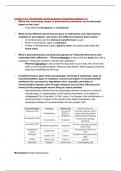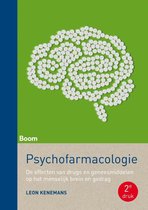Summary
Summary Study questions with answers to psychopharmacology
- Course
- Institution
- Book
Last year, I completed the psychopharmacology course with a 9.5! At that time, I answered all the study questions extensively. This year's material is the same except for 1 lecture. This concerns lecture 12 about hormones. These study questions are therefore not included in this summary!
[Show more]




